The story of how a group of intrepid Kettering school pupils played their unique part in the space race
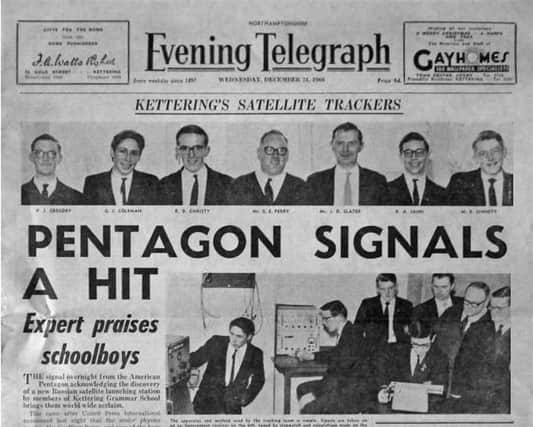

A tense battle to reach the moon had been ongoing between the two nations for years.
And in the middle of that battle was a group of intrepid Kettering Grammar School students and their visionary teacher Geoff Perry.
Advertisement
Hide AdAdvertisement
Hide AdTheir satellite tracking group hit headlines around the world during the space race of the 1960s and 1970s - the first of those coming in the Evening Telegraph in 1966 when the group managed to pick up signals from a Russian satellite launching station and were praised by the Pentagon.
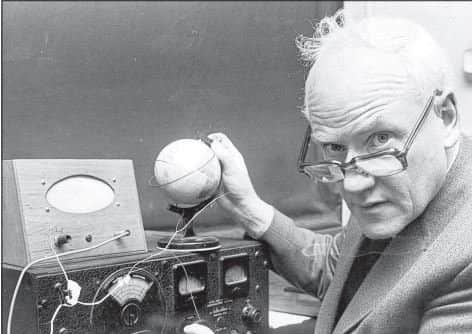

Time and again, the bunch of school pupils from Kettering Grammar School in Windmill Avenue confounded space experts from America and Russia by picking up the first signals from Nasa and Soviet satellite launches on their primitive equipment.
Their “scoops” were reported across the globe and eccentric science teacher Geoff Perry who taught there from 1954 to 1983 became an overnight sensation.
The larger-than-life personality was nicknamed “Bumble” by pupils for his similarity to the Dickensian character in Oliver Twist.
Advertisement
Hide AdAdvertisement
Hide AdMr Perry, awarded the MBE in 1973, became a studio expert during ITV’s coverage of the Apollo 15 moon mission in 1971 and later became ITN’s space consultant.
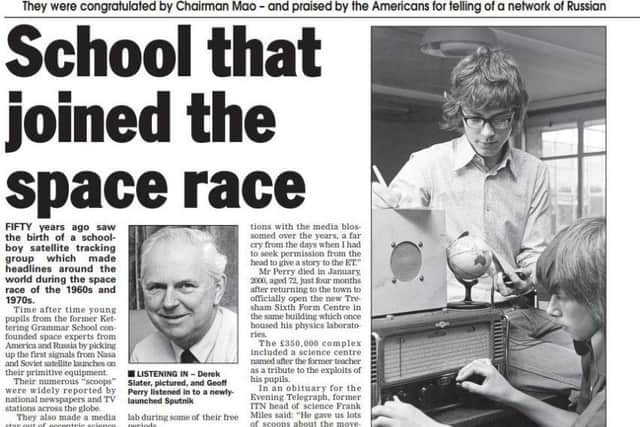

His interest in the subject went back to 1944 when a V2 rocket fell to earth near his then home in Braintree, Essex.
Speaking to the Northants Telegraph in 2007, he said: “At the time we did not know what it was but as soon as it was revealed to have been a rocket, I realised that space travel was no longer a wild dream.”
The satellite tracking group began when Mr Perry teamed up with chemistry master Derek Slater, an amateur radio enthusiast, to ‘listen in’ to what was happening in space.
Advertisement
Hide AdAdvertisement
Hide AdOn Mr Slater’s basic equipment, signals were received from the newly-launched Sputnik 4 satellite in May, 1960.
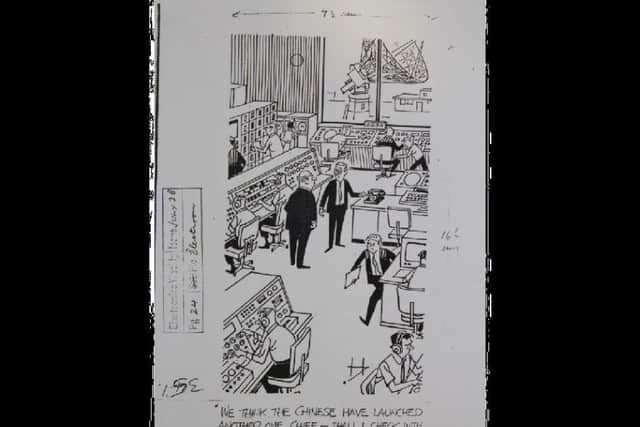

Mr Perry said: “The first pupils to make regular observations were actually sixth form girls from Kettering High School, who came to us for physics, and sat in the empty lab during some of their free periods.
“One day, as I went to teach in another room, I said to them: ‘If that thing starts to beep, note the time for me on the blackboard’.”
After tracking Cosmos 186 ahead of the Russians in 1967, the pupils received a telegram from then Minister of Technology Tony Benn and when China joined the space race, they even had a letter of congratulations from Chairman Mao.
Advertisement
Hide AdAdvertisement
Hide AdIn 1971 they were first off the mark in tracking the manned Soyuz II spacecraft, announcing it to the world hours before the official Tass news agency, and recorded the last signals of the craft before its three cosmonauts died.
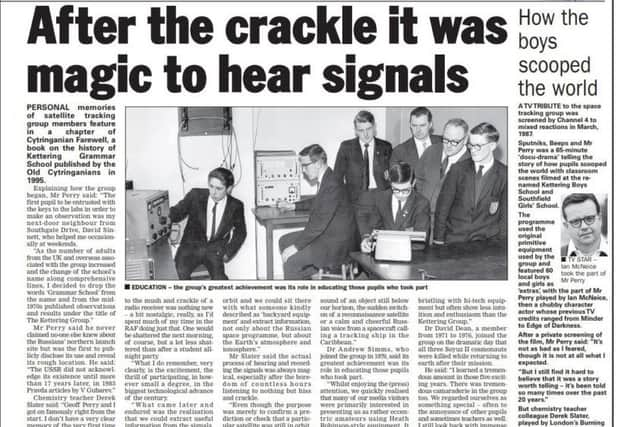

In 1977 the group was publicly praised by the American Senate when it released details of a network of Russian ‘spy’ satellites.
During the 1960s and 1970s the boys became media darlings on both sides of the Atlantic. Their feats were immortalised by top cartoonist Mac, and Daily Mirror columnist Christopher Ward once devoted his entire page to them.
They also starred on Radio 4’s Woman’s Hour and in 1968 took part in a ‘live’ satellite link-up with Dr Tom Payne, head of the US space programme, for a special BBC TV Panorama report.
Advertisement
Hide AdAdvertisement
Hide AdThe trackers also featured in a Channel 4 drama-documentary called Sputniks, Bleeps and Mr Perry.
Mr Perry recalled: “Relations with the media blossomed over the years, a far cry from the days when I had to seek permission from the head to give a story to the ET.”
Mr Perry died in January, 2000, aged 72, just four months after returning to the town to officially open the new Tresham Sixth Form Centre in the same building which once
housed his physics laboratories.
The £350,000 complex included a science centre named after the former teacher as a tribute to the exploits of his pupils.
Advertisement
Hide AdAdvertisement
Hide AdThe work of the renamed Kettering Group had continued until his death.
In an obituary for the Evening Telegraph, former ITN head of science Frank Miles said: “He gave us lots of scoops about the movements of Russian spacecraft.
The Americans thought that outside the military, he knew more than anybody about the Russians’ space movements and they were amazed how a Kettering school teacher could succeed so well. He was a great man.”
In 2016 the story of the Kettering Grammar School Group was immortalised at the National Space Centre in Leicester, where it has its own exhibit viewed by thousands every year.